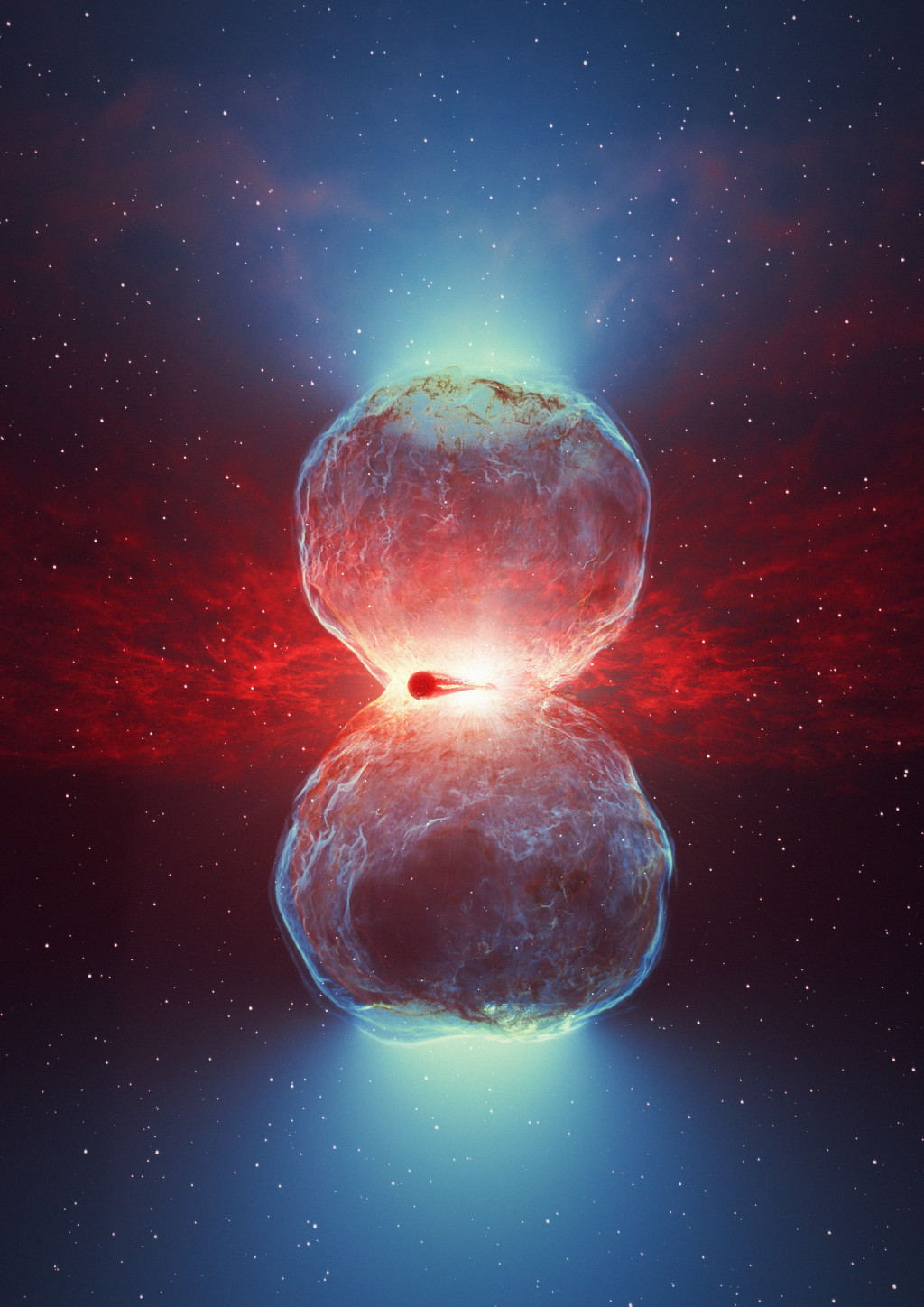Astronomie - Aktuell
11.03.2022
A cosmic particle accelerator at its limit
H.E.S.S. observations have revealed particle acceleration up to TeV energies at the outgoing shock wave that was released by the 2021 nova event in RS Ophiuchi. The observations have permitted to follow the particle acceleration process in real time.
RS Ophiuchi is a recurrent nova with outbursts every 15 to 20 years. Triggered by amateur astronomers who detected the latest nova event from RS Ophiuchi in 2021, H.E.S.S. observations have revealed for the first time gamma-ray emission at TeV energies from such a nova event. The outburst was initially followed for five days, after which moonlight prevented further observations, with an observed peak flux four days after the outburst. The combination of the time-resolved spectra at TeV energies and at lower energies (GeV gamma-ray energies as observed with the LAT instrument onboard the Fermi satellite) have revealed how the different parts of the energy spectrum of relativistic hadronic particles are populated over time. The behaviour is explained by a combination of particle acceleration efficiency at the outgoing shock front and the capability to confine the particles at the acceleration site. The understanding of these processes is important also to deepen our knowledge about the outgoing shock fronts following supernova events, which are believed to be the sites of acceleration of the bulk of all Galactic cosmic rays.
Several members of the Institute for Astronomy and Astrophysics Tübingen (IAAT) are involved in the H.E.S.S. collaboration, which runs the H.E.S.S. array of five imaging atmospheric Cherenkov telescopes in Namibia. H.E.S.S. provides gamma-ray data in the Teraelectronvolt (TeV) regime. In the last years, the Tübingen group played a key role in the development, commissioning, and calibration of a new camera for the 28 meter telescope in the center of the H.E.S.S. array. This camera (“FlashCam”) was brought into operation in 2019. The 28 meter telescope extends the sensitivity of the H.E.S.S. array to lower energies, which is important for broad-band spectral investigations such as the one on RS Ophiuchi.
More information:
https://www.mpi-hd.mpg.de/hfm/HESS/
https://www.mpi-hd.mpg.de/mpi/en/public-relations/news/news-item/hess-watches-a-nova-outburst-for-the-first-time
Original publication:
“Time-resolved hadronic particle acceleration in the recurrent nova RS Ophiuchi"
H.E.S.S. collaboration 2022, Science, 911, L11,
https://www.science.org/doi/10.1126/science.abn0567
Contact at the Institute for Astronomy and Astrophysics Tübingen:
Gerd Pühlhofer

